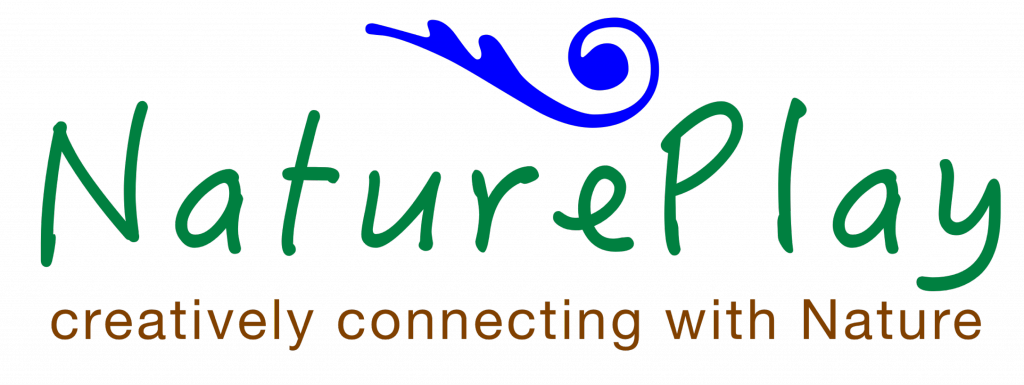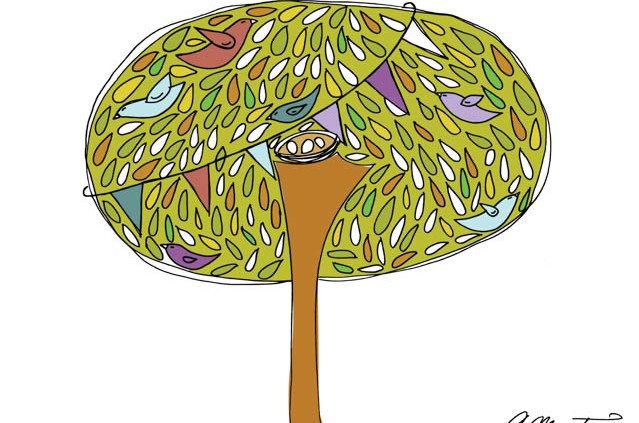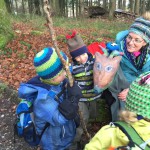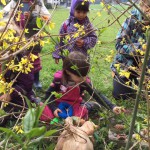The Happiness of a Tree
This piece appeared originally in the February issue of Mothering Matters, a terrific English language blog about parenting Switzerland. The lovely tree illustration is by Laura Munteanu.
There is a wonderful tree outside our window. Over the years, this tree has become our good friend and teacher. I first noticed this lovely being when several other trees in the courtyard had to be chopped down. I suppose they were growing too close to the apartment buildings for comfort. I was sad to see them go and happy to see this beauty spared. I began observing the surviving tree regularly only to discover that she puts on quite a show as the seasons change. Year after year she reveals delicate pale green and red blossoms in spring and rich dense double-toothed green foliage in summer. My son’s birthday falls on the autumn equinox and our friend the tree never fails to mark the occasion offering the first golden leaves of the season. As winter approaches and the first storms pass through she finally releases her sun-filled leaves and launches a flock of helicopter seeds into the frosty air. Our tree has everything it needs to grow: rich nutritious soil, enough room to stretch out, plenty of sunlight, regular water and time to rest. The tree is flourishing.
Happiness is flourishing.
We too are most happy when we are flourishing and the nourishment that makes this possible is that of connection – to our families, to our communities, to the natural world and ultimately to our own natures.
“Happiness is neither virtue nor pleasure nor this thing nor that but simply growth. We are happy when we are growing.”
― W.B. Yeats
Likewise our tree does not live in isolation in the yard but by her very nature, offers herself in service establishing her place in a vast mostly invisible network of life. In winter her thick tangle of bare branches provide a terrific perch for the little birds that remain in the area. The fallen seeds and leaves gather in clumps around thick roots creating a warm blanket protecting the teeming life forms beneath. In the warmer months the tree’s dense foliage provides safe haven as well as sporting ground for cheeky magpies.
For an entire year, my son Jamie and I tracked the changes to our tree, which he documented in writing and pictures in his 6th grade “Baumtagebuch.” Soon we began referring to the tree as “Jamie’s Tree.” It took us a while to figure out what kind of tree it was. Our forays into the online field guides left us more confused than illuminated. Jamie collected samples of leaf, seed and bark and his teacher was quick to identify his tree correctly as a “Hainbuche” or in English, a hornbeam. Carpinus Betalus. Named for the beech in German, often considered related to the hazel, the hornbeam is actually a member of the birch family. No wonder the confusion. Like most of us, the hornbeam defies easy categorization. Jamie understands this well as he explains, “My Swiss friends think I’m American, and my American friends think I am Swiss.” Jamie knows he is not either/or but both/and. The whole is greater than the sum of its parts.
Our research and observation of the hornbeam continued. One spring afternoon the neighbor’s cat ventured out onto a limb only to be aggressively dive bombed by crows. Jamie didn’t witness this spectacular piece of theatre which has since become legendary. Legend also has it that if you listen to the trunk of a hornbeam with a stethoscope you can hear the pulsing of the tree sap within like a heartbeat. And according to Harry Potter, the hard wood of the hornbeam makes an excellent wand!
After the first snow of the season blew in fiercely the other day, I noticed a good-sized branch lying on the ground beneath Jamie’s tree. I immediately and happily went to retrieve it, brought it inside and received it as a gift from my friend the hornbeam. It will make a beautiful holiday decoration.
As this lovely tree has made its way quite literally into our home, it has likewise entered our hearts. By taking the time to observe and interact with this tree we have forged an ever-strengthening connection with it. I am grateful to this elegant tree as it has also allowed my son and I another way to strengthen our bond. And this makes me happy.
Happiness is a grateful heart.
By connecting with the tree outside my window, I am connecting to the deeper ecosystem of which it is part. But am I a part of this ecosystem as well? I am not native to these parts. Even after 15 years, I often feel like a strange, delicate hothouse flower imported from another land or worse like a dreaded invasive species.
It’s true, I am less a hornbeam than my son. But the hornbeam and the rest of the natural world can teach me to see through native eyes and find my place in this new land if I am willing to pay attention.
My first and best friend here in Switzerland has been the land itself followed by those closest to it, the children. Both are my teachers and my role models. The children don’t care if my German is less than perfect, or think me strange if I talk to raindrops. The children hear the tone of my voice, like the song of a bird offering a safe place to play and be themselves. And the forest offers me a receptive place for my loud exuberance and spontaneity.
The hornbeam flourishes because it is integrated into the larger system yet remains every bit itself. My son flourishes for the same reason.
As neuropsychologist Dan Siegel puts it, Integration is not homogenous like a smoothy, it is a fruit salad. Individual parts of the whole remain distinct yet are connected. And so a new whole is created – a whole that is greater than the sum of its parts. Now that is a happy proposition!
The more integrated we are as individuals, as members of a community, and ultimately as inhabitants of planet earth, the more whole and happier we become. We find our place not only in our family, our neighborhood, our country, but more fundamentally in what poet Mary Oliver calls “the family of things.”
“… the world offers itself to your imagination,
calls to you like the wild geese, harsh and exciting –
over and over announcing your place
in the family of things.”
– Mary Oliver, Wild Geese
Happiness is finding your place.




Comments are closed.